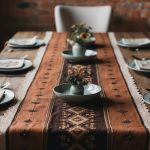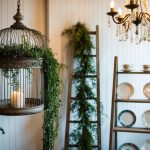Timeless Home Decor Ideas: Achieving an Everlasting Classic Look
Flooring Essentials
The foundation of a timeless home often starts with the right choice of flooring. Select materials that blend durability with classic aesthetics to ensure long-lasting style.
Hardwood, Tiles, and Rugs
Hardwood floors are a perennial favorite for creating an enduring aesthetic. Oak, maple, and walnut are popular choices due to their resilience and versatile grain patterns. These types of wood can suit both modern and traditional interiors.
Tiles, especially ceramic and porcelain, are sought-after for their resistance to wear and ability to offer various design options. Tiles can mimic natural stone or even wood, offering flexibility in achieving the desired look.
Rugs provide warmth and accentuate the beauty of hard flooring. Opt for neutral-toned rugs with intricate patterns to add a touch of sophistication without overwhelming the space.
Maintaining Timeless Floors
Regular maintenance ensures that floors maintain their timeless appeal. Hardwood requires occasional refinishing and should be kept free from excessive moisture. Use appropriate cleaners to avoid damaging the wood surface.
Tiles need less frequent upkeep but should be checked for cracked grout or tiles. Regular cleaning with mild solutions keeps them looking pristine.
Rugs require routine vacuuming and occasional professional cleaning. Rotate rugs periodically to ensure even wear and preserve their appearance.
Cohesive Theme Throughout the Home
A consistent theme in home decor creates harmony and unity across individual spaces. It enhances the overall aesthetic and offers a seamless transition from one room to another.
Creating a Visual Flow
To establish a visual flow, begin by selecting a central design theme that resonates with personal taste. This could range from modern minimalism to rustic farmhouse. Each room should reflect this theme through furniture, decor, and architectural elements.
Maintaining consistency in textures and materials is crucial. For instance, if hardwood floors are used in the living room, consider extending them into adjacent areas. Similarly, repeating patterns or motifs helps tie different spaces together without feeling monotonous.
Smooth transitions between rooms are essential. This can be achieved through the use of rugs, artwork, or lighting fixtures that echo design elements found in neighboring spaces. Thoughtful placement of mirrors can also help reflect style elements across rooms, enhancing continuity.
Unified Color and Style Schemes
Choosing a unified color palette is essential in creating a cohesive home decor theme. It’s effective to select a primary color for the house and then incorporate complementary shades across different rooms. This brings uniformity while allowing for individual character in each space.
Style schemes should also be uniform. If a specific design style is followed in one room, it should be evident in others as well. For example, in a Scandinavian-themed home, clean lines, natural materials, and neutral colors should be consistent throughout.
Don’t overlook small details such as door handles, light switches, and other fixtures. Keeping these elements consistent with the overall design theme helps reinforce unity and cohesion. Even the choice of plants and decorative objects should align with the chosen style and color scheme.



